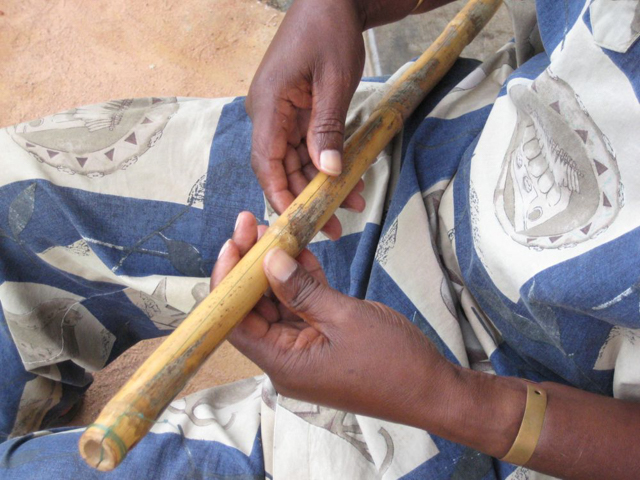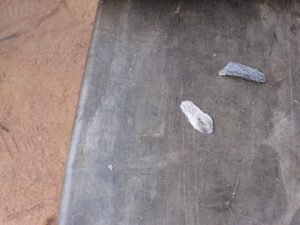The mukube is one among dozens of musical bows dispersed throughout Southern Africa in a wide arc stretching from the equatorial region of the Congo down to South Africa. Like the chipendani and kambuya-mbuya, the chipendani is a monochord instrument, meaning that it features only a single string. While the mukube’s string is not divided by a brace, players are able to produce multiple fundamental pitches by depressing the bottom portion of the string against the bow stave with one finger, thereby shortening the string’s length and raising its pitch.
As Sekuru Chigamba relates, the mukube’s string was traditionally made from the sinew of a cow, while its stave was made from a length of river reed. On his personal instrument, Sekuru Chigamba has substituted a nylon string for cow sinew.
Even given the scant attention Zimbabwean musical bows have generally received, the mukube remains particularly obscure. In comparison with the chipendani, which constitutes the subject of substantial discussion in several books and articles, the mukube has received little serious consideration.
As with the chipendani, the mukube is held against the cheek, using the player’s mouth as a resonating chamber that both amplifies the instrument’s sound, and produces overtones that emerge distinctly above the instrument’s fundamental pitches. Unlike the chipendani, which is commonly plucked with the thumb and forefinger, the mukube is played with a plectrum made from a small, flat piece of cow horn.


